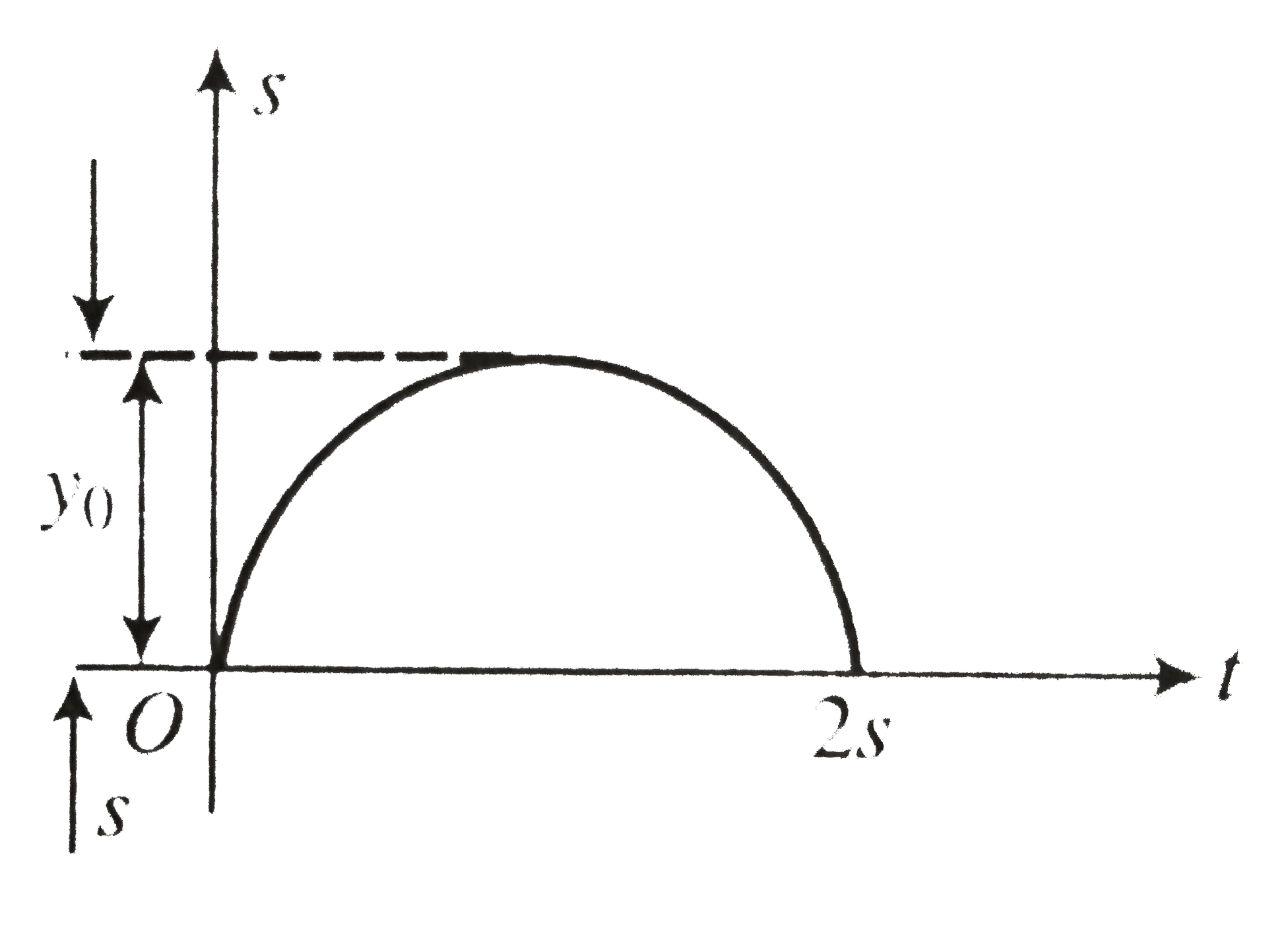The velocity of a particle are given by along x–axis. Calculate the average acceleration of particle during the time interval from t = 1 to t = 2s.
To solve the problem of calculating the average acceleration of a particle given its velocity function, we can follow these steps:
1. Identify the velocity function: The velocity of the particle is given by the equation:
v(t)=4t−2(in m/s)
2. Determine the time interval: We need to calculate the average acceleration from t=1 second to t=2 seconds.
3. Calculate the velocity at t=1 second:
v(1)=4(1)−2=4−2=2m/s
4. Calculate the velocity at t=2 seconds:
v(2)=4(2)−2=8−2=6m/s
5. Find the change in velocity:
Δv=v(2)−v(1)=6m/s−2m/s=4m/s
6. Calculate the change in time:
Δt=2s−1s=1s
7. Calculate the average acceleration:
The average acceleration aavg is given by the formula:
aavg=ΔvΔt=4m/s1s=4m/s2
8. Direction of acceleration: Since the velocity is along the x-axis, the average acceleration is also along the x-axis, which can be represented as:
aavg=4m/s2^i
Final Answer:
The average acceleration of the particle during the time interval from t=1 to t=2 seconds is:
4m/s2^i
v(t)=4t−2(in m/s)
v(1)=4(1)−2=4−2=2m/s
v(2)=4(2)−2=8−2=6m/s
Δv=v(2)−v(1)=6m/s−2m/s=4m/s
Δt=2s−1s=1s
The average acceleration aavg is given by the formula:
aavg=ΔvΔt=4m/s1s=4m/s2
aavg=4m/s2^i
The average acceleration of the particle during the time interval from t=1 to t=2 seconds is:
4m/s2^i
Topper's Solved these Questions
- Motion in Straight Line Book:VMC MODULES ENGLISHChapter:Motion in Straight Line Exercise:SOLVED EXAMPLES
Explore 20 Videos
- Motion in Straight Line Book:VMC MODULES ENGLISHChapter:Motion in Straight Line Exercise:PRACTICE EXERCISE
Explore 80 Videos
- MOTION IN A STRAIGHT LINE & PLANE Book:VMC MODULES ENGLISHChapter:MOTION IN A STRAIGHT LINE & PLANE Exercise:IMPECCABLE
Explore 52 Videos
- Motion in Two DimensionsBook:VMC MODULES ENGLISHChapter:Motion in Two DimensionsExercise:MCQ
Explore 2 Videos
Similar Questions
The position (x) of a particle moving along x - axis veries with time (t) as shown in figure. The average acceleration of particle in time interval t = 0 to t = 8 s is

View SolutionThe velocity of a particle is given by v=(2t2−3t+10)ms−1. Find the instantaneous acceleration at t = 5 s.
View SolutionThe velocity time relation of a particle is given by v =(3t2−2t−1)m/s Calculate the position and acceleration of the particle when velocity of the particle is zero . Given the initial position of the particle is 5m .
View SolutionA particle moves rectilinearly possessing a parabolic s-t graph. Find the average velocity of the particle over a time interval from t=12s→t=1.5s.

View SolutionAcceleration of a particle is given by
a=3t2+2t+1
Where t is time . Find
(i) its velocity at time t assuming velocity to be 10 m/s at t = 0.
(ii) its position at time t assuming that the particle is at origin at t = 0.
(iii) What is the average speed of the particle in the duration t = 0 to t = 1s?
(iv) What is the average acceleration of the particle in the duration t = 0 to t = 1s?
View SolutionThe velocity of a particle is given by v=(4t2−4t+3)m/s where t is time in seconds. Find its acceleration at t=1 second.
View SolutionThe acceleration of particle varies with time as shown.

(a) Find an expression for velocity in terms of t.
(b) Calculate the displacement of the particle in the interval from t=2s to t=4s. Assume that v=0 at t=0.
View SolutionIf the velocity of a paraticle moving along x-axis is given as v=(4t2+3t=1)m/s then acceleration of the particle at t=1sec is :
View SolutionThe position of a particle moving on X-axis is given by x=At2+Bt+C The numerical values of A, B and C are 7, -2 and 5 respectively and SI units are used. Find
(a) The velocity of the particle at t= 5
(b) The acceleration of the particle at t =5
(c ) The average velocity during the interval t = 0 to t = 5
(d) The average acceleration during the interval t = 0 to t = 5
View Solutionthe angular velocity omega of a particle varies with time t as ω=5t2+25rads. the angular acceleration of the particle att=1s is
View Solution
